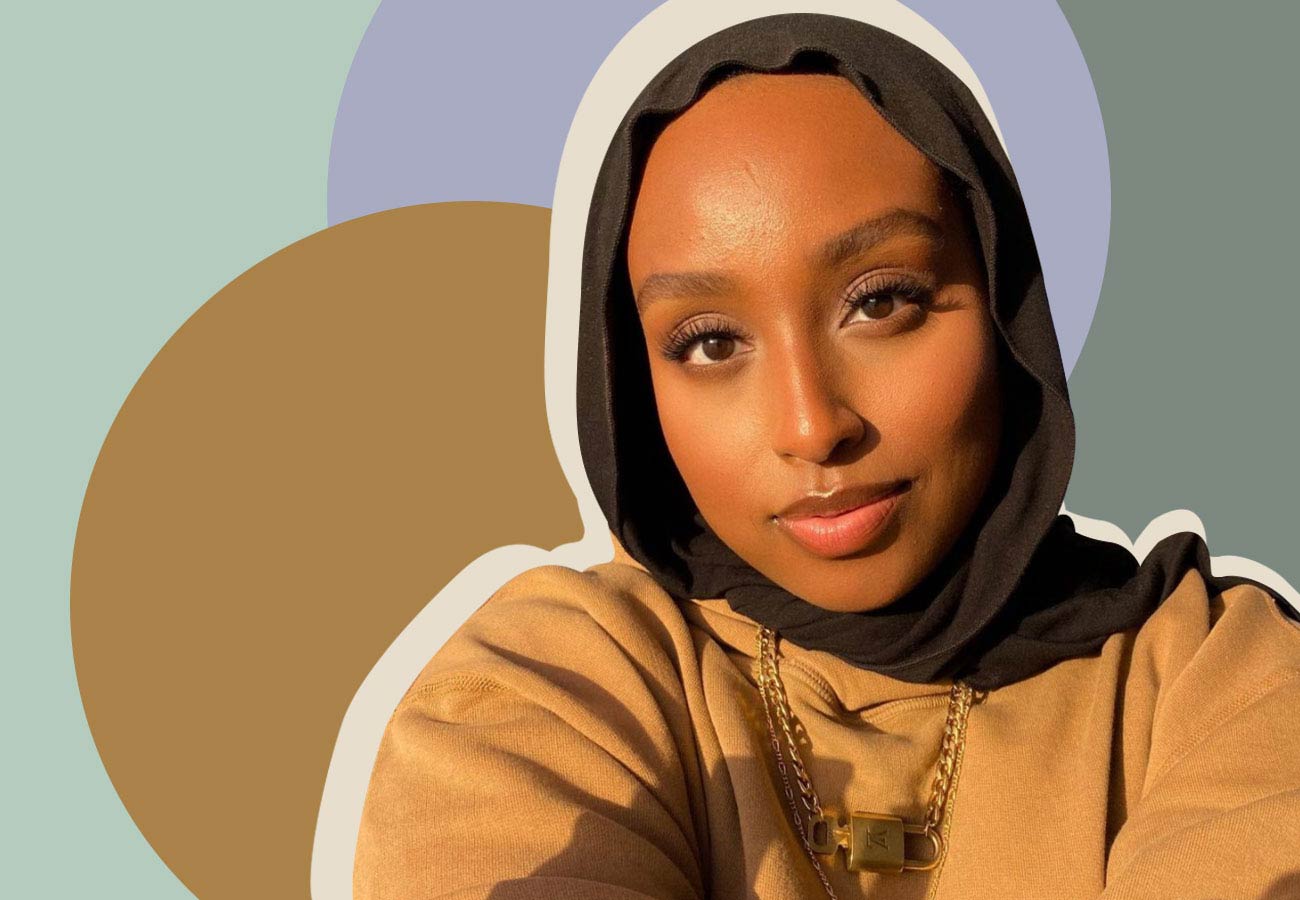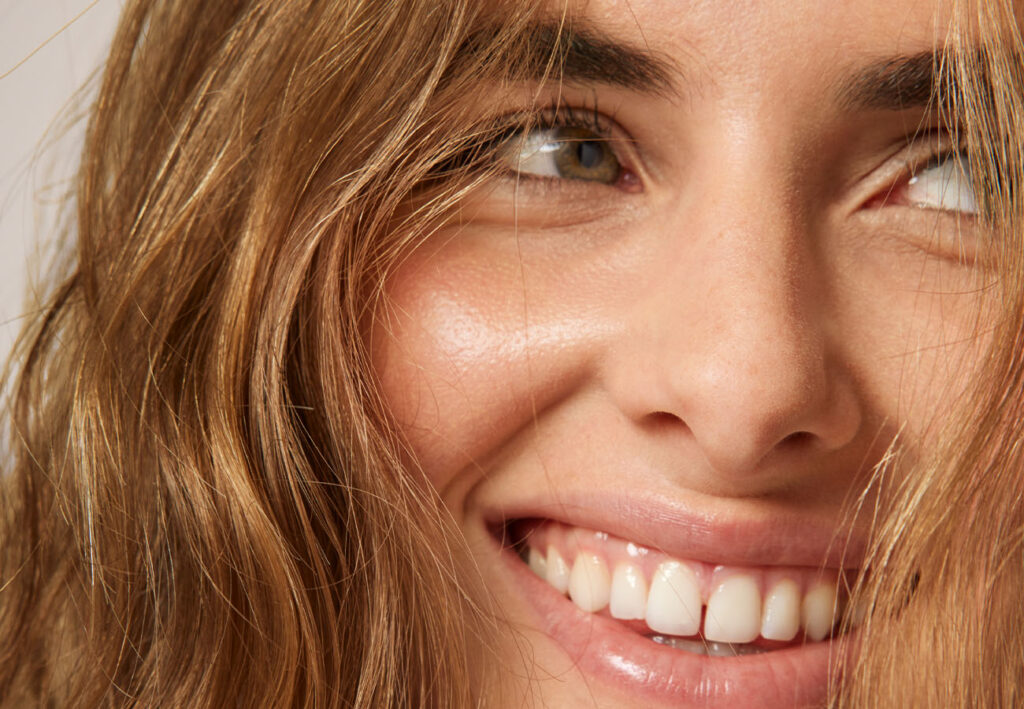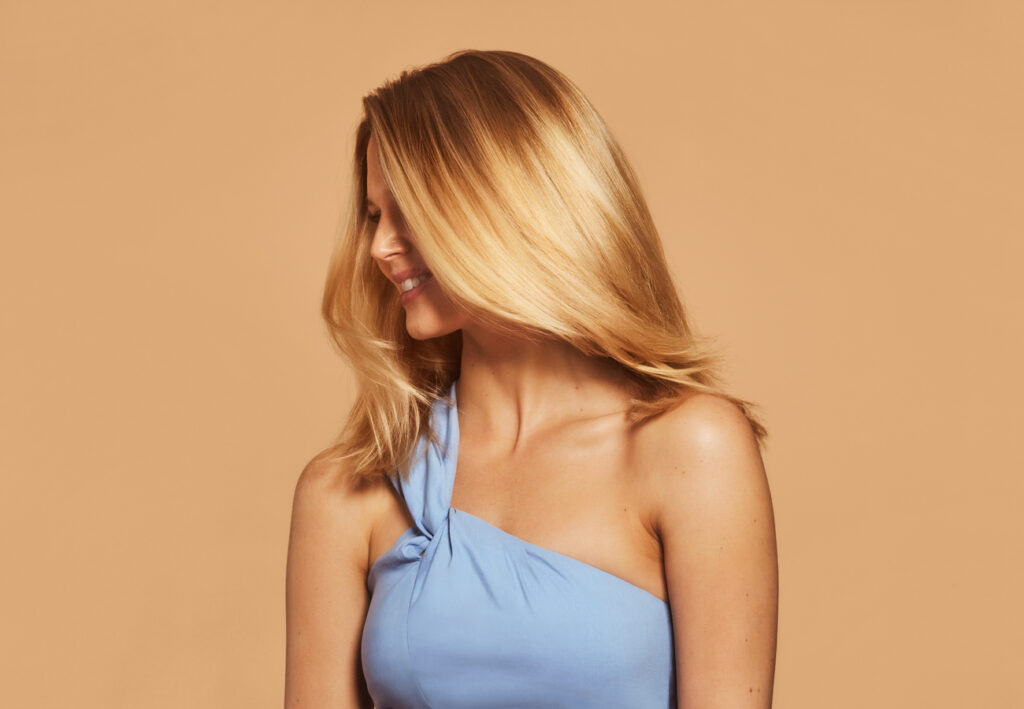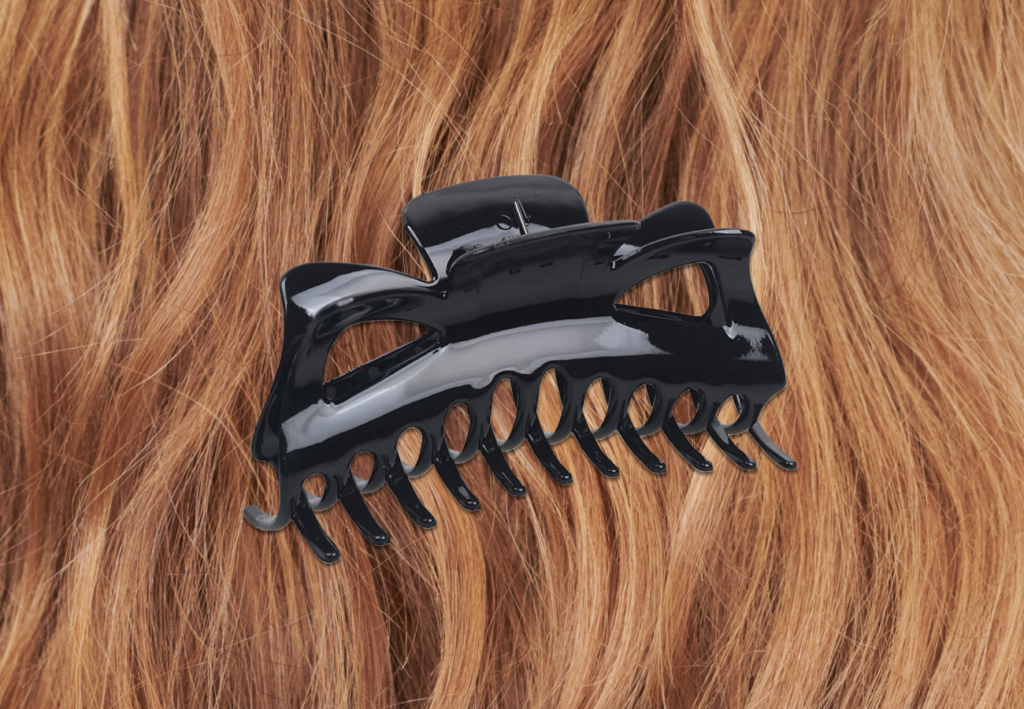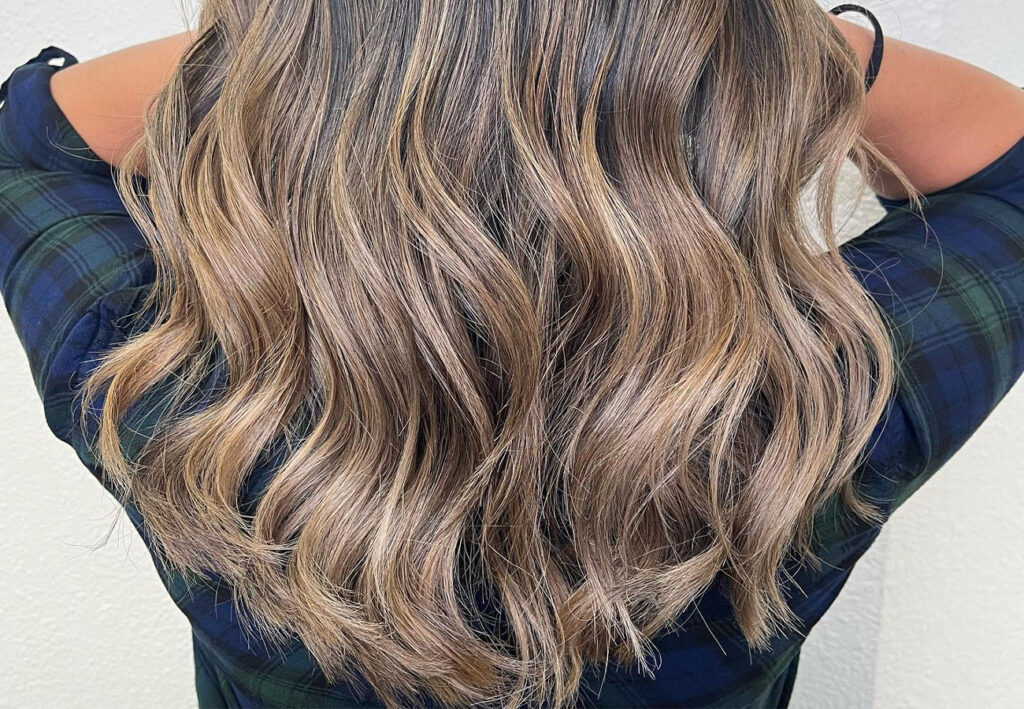Growing up and gaining self acceptance
Harun was born and raised in Toronto, Canada by traditional Ethiopian parents. And while she’s first generation and has only visited Ethiopia once, she has always felt very deeply connected to her culture and heritage. But growing up in a culture where colorism is quite common, made it difficult for her to feel comfortable in her own skin and embrace her darker complexion.
“Colorism was definitely a huge issue in the community,” she says. “For example, my mother is a lot lighter than I am and so is my brother. I have a deeper, richer complexion than both of them and that was constantly brought in conversations,” she says. “It made me develop a very skewed interpretation of beauty growing up, because I always assumed that lighter skin meant more beautiful. While I recognize that this is definitely something that’s common in many different cultures, not just within the Ethiopian community—particularly within communities of color—it was still very much a struggle.”
As a result, Harun would often avoid the sun because when she would get darker during the summers, she would get made fun of by her peers. It was her discovery of cosmetics in her teens that eventually gave her the agency to fall in love with her skin tone. “I got to play around with different colors and really understand what looked best on my skin tone and it helped me really love it,” she says. “It was definitely a journey. But it was during my teenage years that I really started to love my skin tone for what it is.”

Pursuing beauty at a young age
It was during those years that Harun found herself watching beauty tutorials on YouTube created by some of the first beauty influencers in the game like Michelle Phan. “At that time there weren’t a ton of Black beauty influencers on YouTube. This was around 2007/2008,” she says. And there certainly weren’t any Black hijabi beauty influencers. So in 2011, I started my channel when I was only 16-years old. There was no intention of becoming a beauty influencer or taking this into my career full time. It just progressed organically and I can honestly say that I was likely one of the first Black Muslim and hijab-wearing women on YouTube in the beauty space in particular. There was no one else really doing it.”
Harun graduated from college in May of 2017, with a degree in Business Administration and Marketing. By then she had already developed a following of 60K subscribers and shortly after made the decision to pursue her beauty influencer career full-time. Harun started to recognize the deep impact she was making in the community and would often receive messages from other Black Muslim women thanking her for making them feel seen. “They would say things like I can’t believe I found an East African on YouTube or I can’t believe I found someone who looks exactly like me and has my same skin tone and wears a hijab like me and is talking about beauty on YouTube,” she says. “That was one of the first things that really started connecting for me. I wish I had this kind of representation growing up but I’m glad that I have helped fill a gap for myself and for women like me and even for women who’ve maybe never even see a Black Muslim woman in beauty but are still connecting to my content.”
Harun who has racked up an impressive Instagram following of over 280K provides everything in her content from makeup and skincare tutorials, product reviews, hair care tips for hijabi women, and has even expanded into lifestyle, where she shares with her followers everything from her Ramadan practices to her recent divorce.
Wearing her hijab with pride
Speaking of hijabs, Harun has quite the stylish collection herself. She was in sixth grade when she made the personal decision to start wearing it. “Fundamentally, what it means to me is that it symbolizes my connection to God. My religion is really important to me and everyday that I wrap my scarf it’s a reminder that there is a bigger purpose in life,” she says. “I know when I step outside people know that I’m Muslim and it inspires me to be good to others and to make sure that I am respectful in public and private. It’s like my crown.”
She recently collaborated with a hijab brand called Voile Chic, where she was able to participate in creating new designs. “They are pre-sewn hijabs and I absolutely fell in love with that design,” she says. “We worked together to improve the quality of it and I came out with two curated box sets. One of them was called Blush and Queen and that one had more of a feminine vibe. And the other one was called Safari Dreams, which had more earth-toned colors like black and khaki. It was just really amazing seeing people wear my hijabs.”

Learning hijab haircare
In terms of haircare for hijabi-wearing Black women, Harun says it can be a struggle but through her own journey with taking care of naturally curly hair worn under a hijab, she’s learned some tips.
“What I recommend to most people who are struggling with breakage is keeping it in protective styles or even just braiding it at night,” she says. “There are also some amazing technologies coming out now where there are actually hijabs with silk lined undercaps that work to really protect your hair. It’s silk-lined underneath and then the top is cotton so your hijab doesn’t slip around all day.”
Harun’s own relationship with her natural curls growing up was complex to say the least. She spent years relaxing it and wearing it straight because she felt that she had to in order to look her best. It wasn’t until after college, after experiencing extreme damage and dryness from relaxing and straightening, that she felt inspired to finally take care of her natural hair. After figuring out a routine and incorporating deep conditioning treatments, leave-in conditioners, and curl creams, Harun finally found her rhythm and slowly started to fall in love with her self-described 4A curls. Through that process she figured how best to care for curls while still wearing a hijab.
Aysha’s top tips for hijab-wearing haircare for natural hair:
1. Let your hair breathe. “When you get home and remove your hijab—don’t keep it in a bun. Let your hair down and allow it to breathe. Also, when you do wear your hijab, don’t wear it so tightly,” she advises. “I grew up wearing my hijab literally glued to my face and that really ruined my edges because of the friction from the fabric.” She recommends opting for lighter fabrics like silks or breathable cottons and wearing it loosely around the head to avoid damage.
2. Do regular scalp massages. “I do them mainly before I wash my hair. I’ve been really getting into root treatments and I’ll use that time to really get in there and massage my head for at least 5 minutes and have noticed an extreme difference,” she says. Massaging the scalp helps blood circulation, which promotes hair follicle growth and can prevent hair loss and shedding. You can even use a scalp brush and massage your scalp while you’re shampooing.
3. Do a bonding treatment. Harun isn’t always loyal to her weekly hair masks but one thing she’s religious about are her treatments which help rebond hair proteins and are great for repairing damage and bringing back the bounce in naturally curly hair. Her favorite these days is the Olaplex No.3 Treatment, which is particularly great at repairing color or heat-damage.

Wash-day is just one of the many little opportunities Harun takes to pamper herself though for her self-care goes way beyond beauty treatments. It’s about taking time out of the day to disconnect especially from social media since her career revolves around it. It’s taking a bath, it’s decompressing and it’s checking in with herself. In terms of what she wants folks to ultimately take away from her brand, she wants people to look at her content and really feel something.
“I want people to just really connect to it. I want them to know that even through the toughest moments that there is a light at the end of the tunnel and you can feel connected and inspired by someone even if you’ve never met them,” she concludes. “For me, women reaching out about their own healing journeys lets me know that I am on the right track because people feel comfortable enough to come to me with their moments. I want people to walk away from my content feeling inspired, not that I’m this aspirational person. But more that they can see themselves in my content. If you put your heart into it, you can succeed.”

